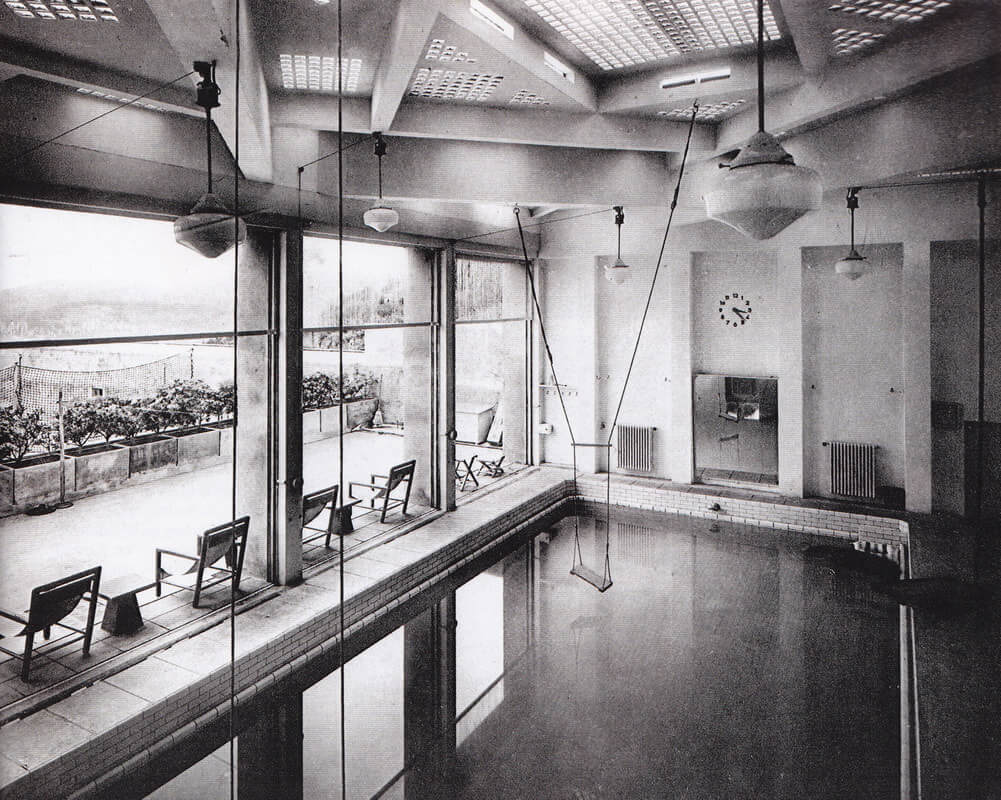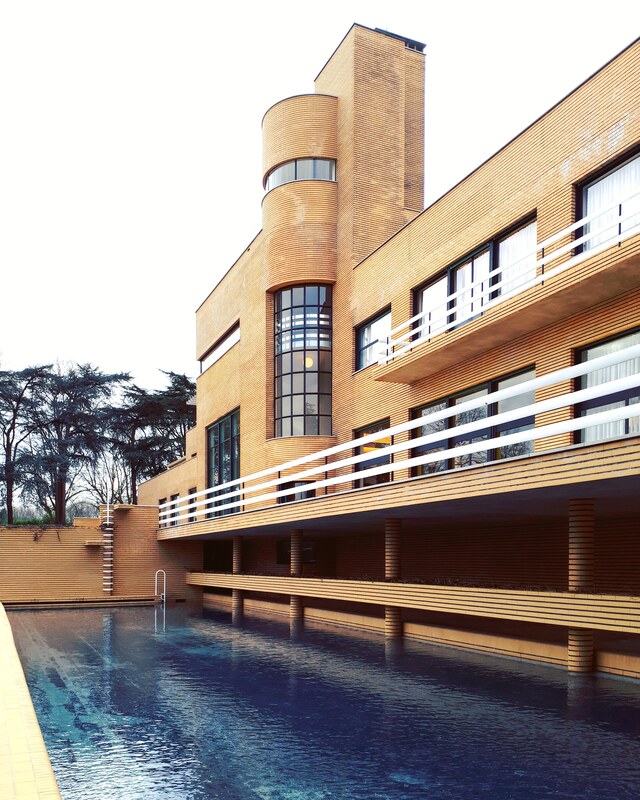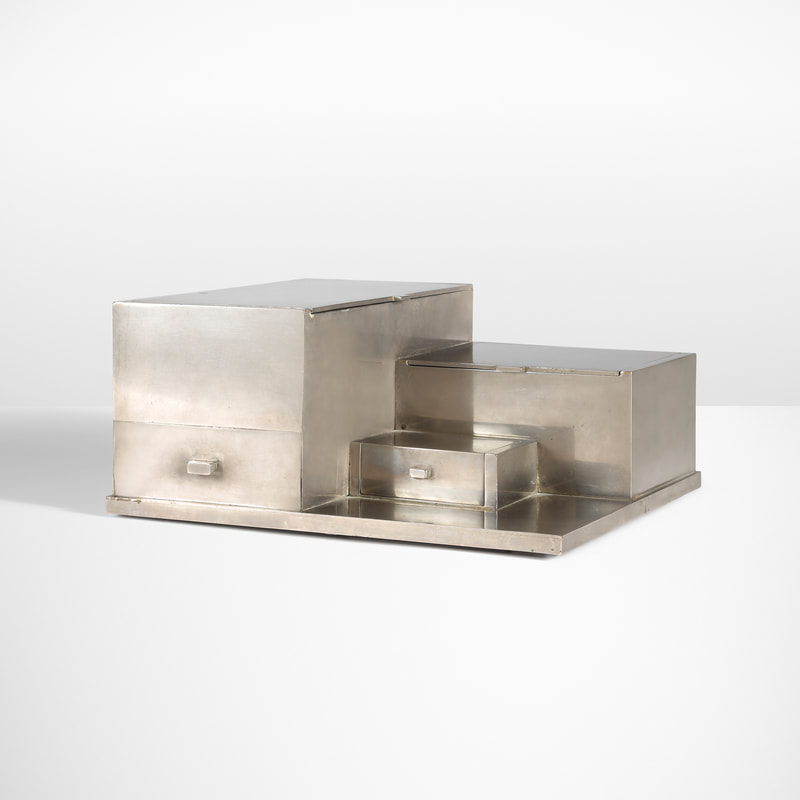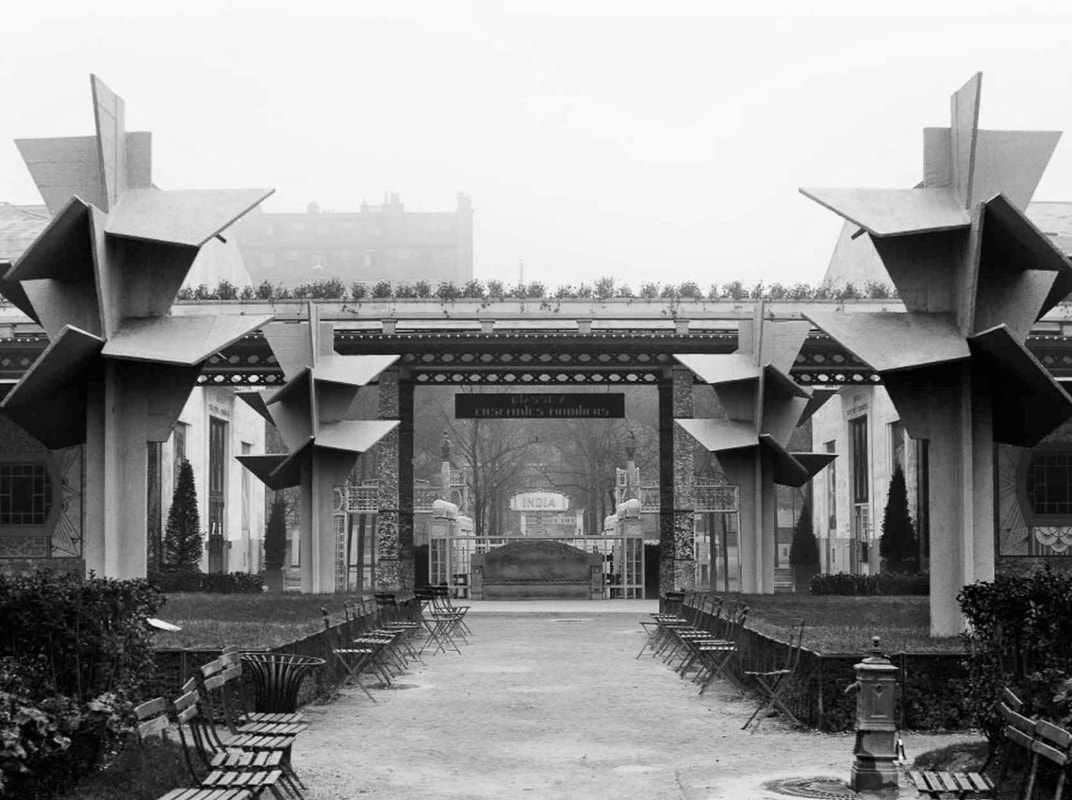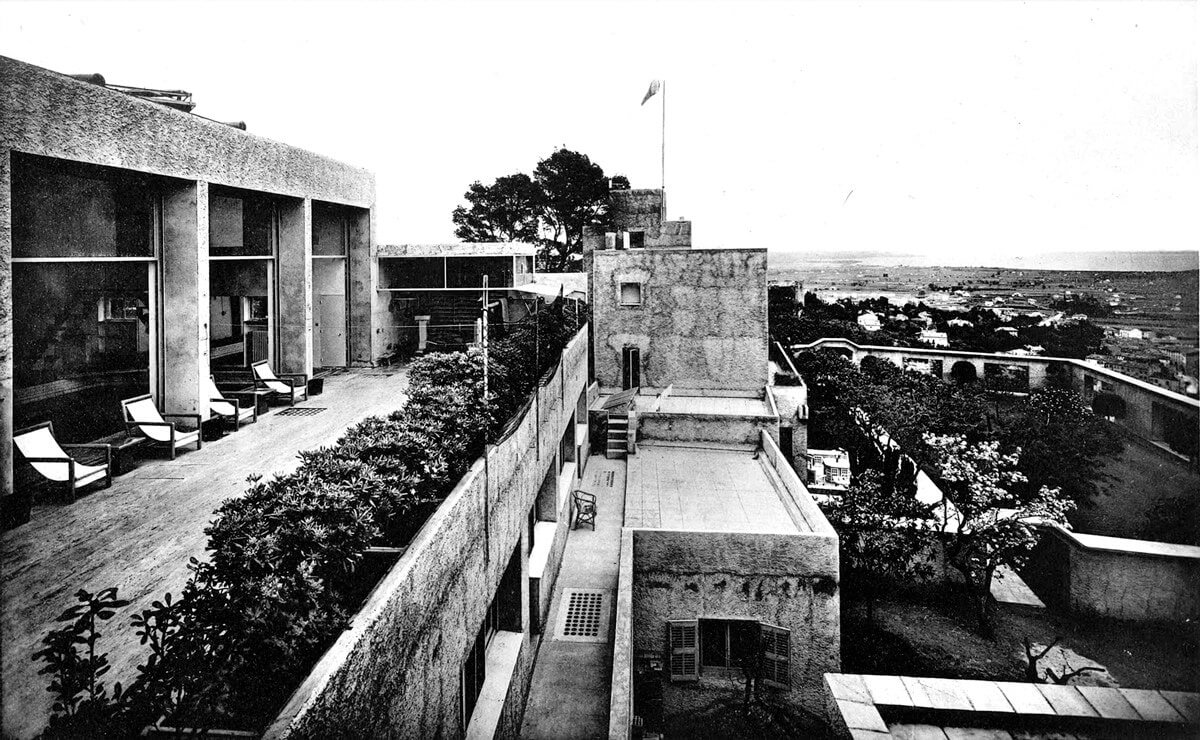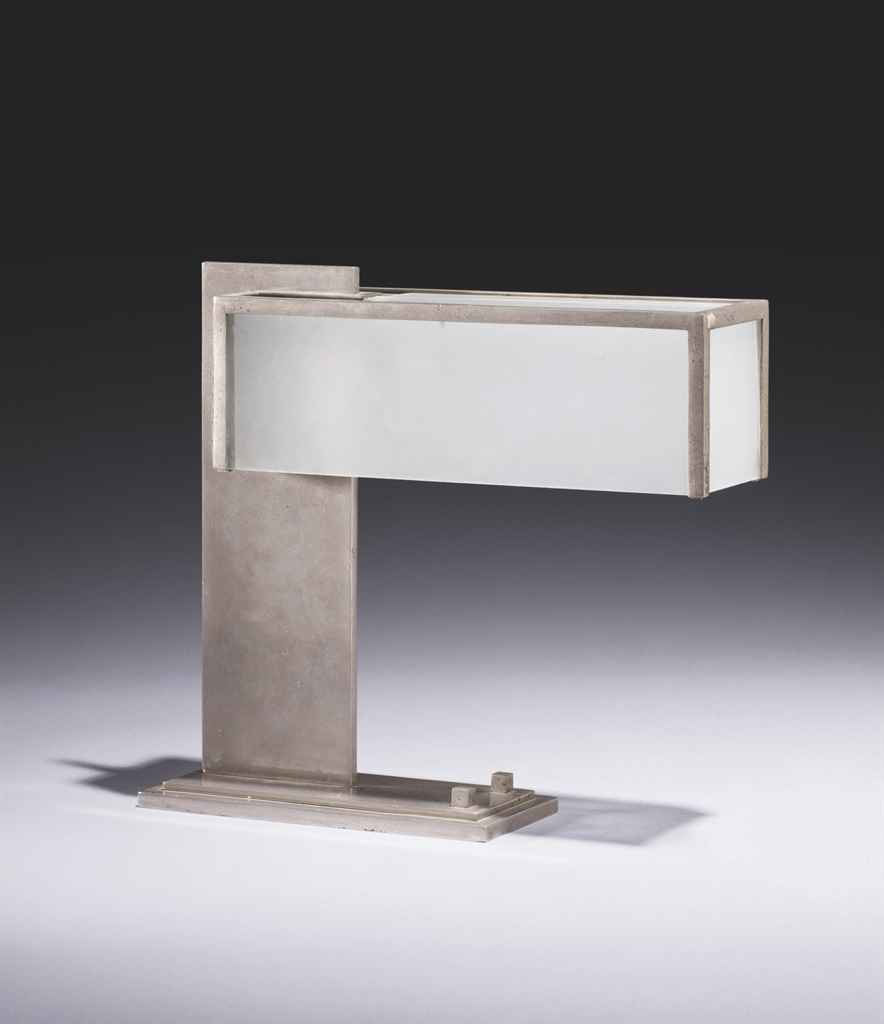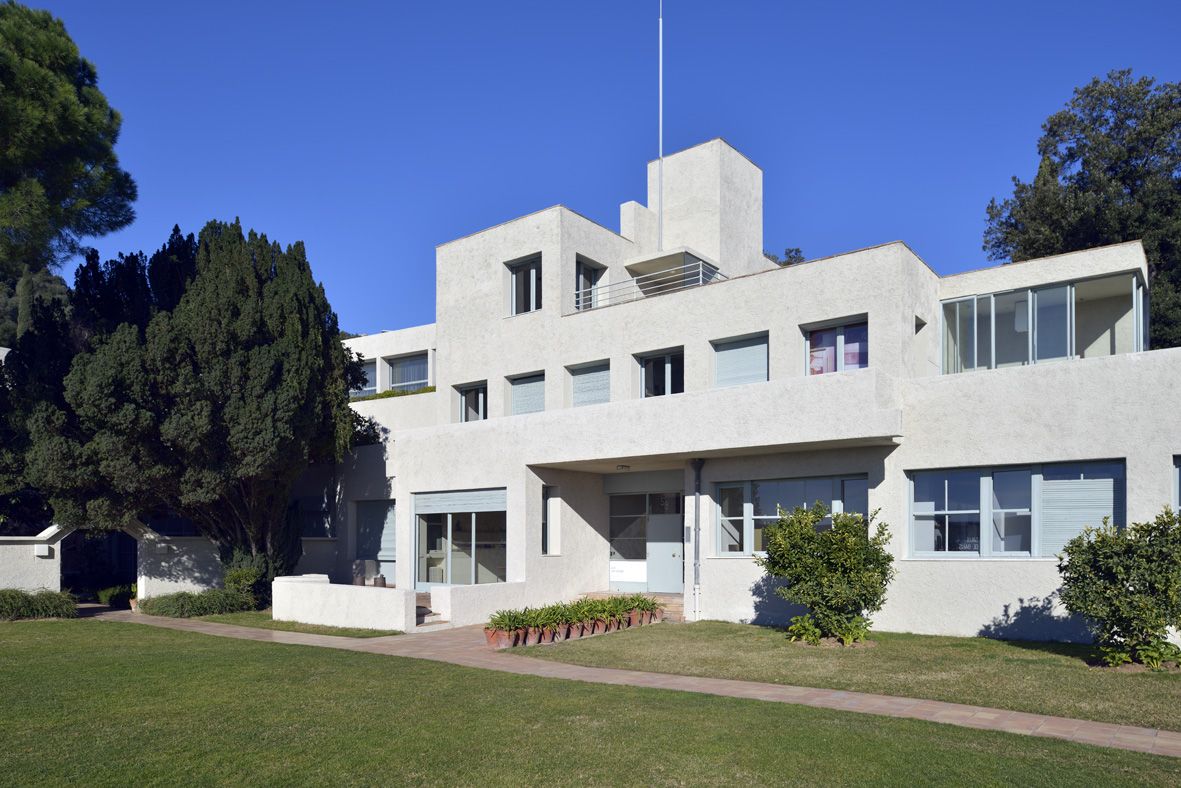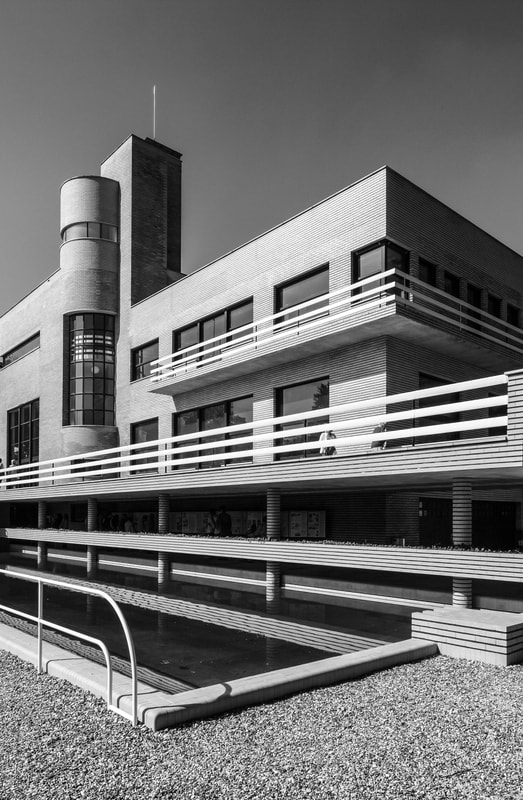To acknowledge the concluding talk in The Story of Modern Design (Part II), devoted to French Art Deco, I would to look at the legacy of brilliant architect Robert Mallet-Stevens (1886-1945). One of the least known of his generation, Mallet-Stevens ordered that his archives be destroyed upon his death.
For the 1925 International Exhibition of Modern Decorative and Industrial Arts, he created a series of monumental, cubist sculptures in concrete, entitled ‘Trees.’ With their dramatic wings, they became known from fashion shoots by Sonia Delaunay. Her models, wearing cutting-edge art dresses, these photos were the ultimate juxtaposition of avant-garde art and fashion. The ‘Trees’ were set outdoor in a courtyard, perceived as what he referred to as ‘architecture garden.’
For prolific art collectors Marie-Laure and Charles De Noailles, he created a dramatic modernist mansion on the hills rising above Hyères in the South of France, completed in 1932. The cubist masterpiece became a meeting place for the artists of French avant-garde surrounding the two, who were patrons of design and fashion. Among the guests visiting the Villa, which was Mallet-Stevens’ first completed residence, were Man Ray, Dalí, and Cocteau. In 1929, the this masterpiece was the subject of a film by surrealist photographer Man Ray, called The Mysteries of the Château de Dé. The De Noailles are considered among the most legendary tastemakers of the 20th century, and their taste was shaped around Surrealism and what they had seen at the International Exhibition of Decorative, Industriel, and Modern Arts.
For the 1925 International Exhibition of Modern Decorative and Industrial Arts, he created a series of monumental, cubist sculptures in concrete, entitled ‘Trees.’ With their dramatic wings, they became known from fashion shoots by Sonia Delaunay. Her models, wearing cutting-edge art dresses, these photos were the ultimate juxtaposition of avant-garde art and fashion. The ‘Trees’ were set outdoor in a courtyard, perceived as what he referred to as ‘architecture garden.’
For prolific art collectors Marie-Laure and Charles De Noailles, he created a dramatic modernist mansion on the hills rising above Hyères in the South of France, completed in 1932. The cubist masterpiece became a meeting place for the artists of French avant-garde surrounding the two, who were patrons of design and fashion. Among the guests visiting the Villa, which was Mallet-Stevens’ first completed residence, were Man Ray, Dalí, and Cocteau. In 1929, the this masterpiece was the subject of a film by surrealist photographer Man Ray, called The Mysteries of the Château de Dé. The De Noailles are considered among the most legendary tastemakers of the 20th century, and their taste was shaped around Surrealism and what they had seen at the International Exhibition of Decorative, Industriel, and Modern Arts.
At the same time, Mallet-Stevens designed Villa Cavrois (1929-32) in Croix, in north of France, for textile industrialist Paul Cavrois. The language of distinctive sober, geometrical, minimal sensibility was also applied to his furniture and objects. He is often called the Mies of French architecture for the great attention to detail and for the expressiveness of the minimal. Join me this evening for The Story of Modern Design.
Above: Robert Mallet-Stevens, Villa Noailles, Hyères (in the Var), France, 1924.

